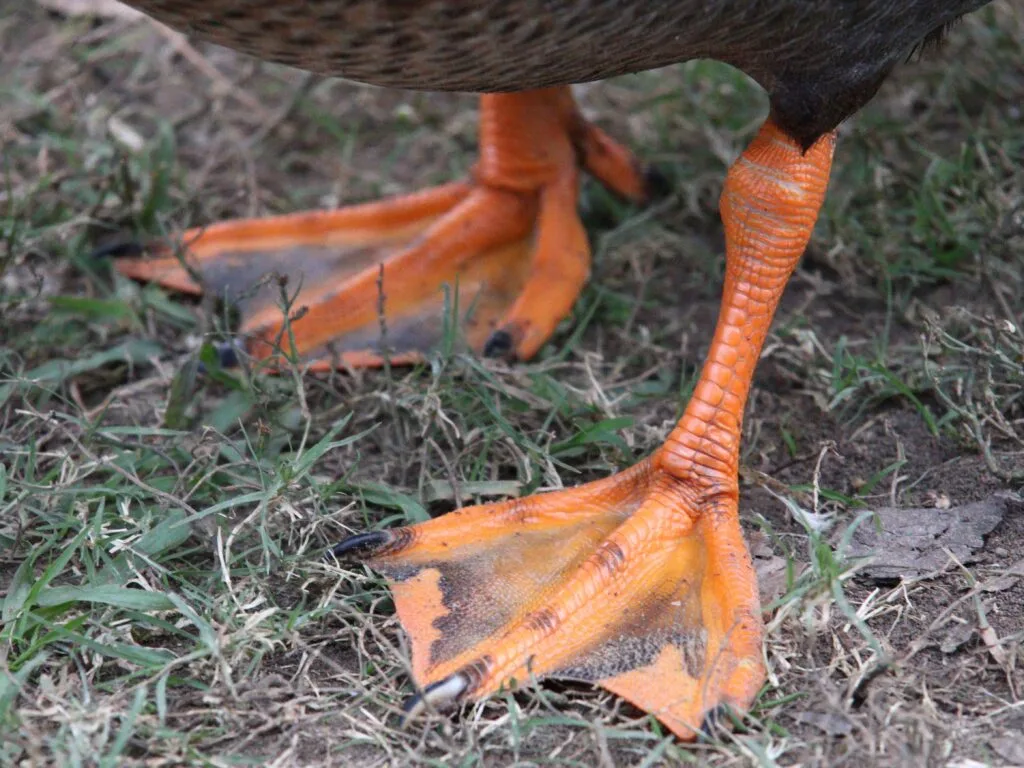
Ducks are a common sight gliding across ponds, lakes, and rivers. Their ability to effortlessly float on water seems almost magical. But the truth is, ducks have evolved some remarkable adaptations that allow them to thrive in aquatic environments. These adaptations include their unique webbed feet and dense, waterproof feathers. This article will delve into the fascinating science behind how ducks float, exploring the roles of their specialized anatomy and behavior.
Duck Webbed Feet
One of the most distinctive features of ducks is their webbed feet. These broad, flat feet are connected by a layer of skin called webbing. This webbing acts like paddles, propelling ducks through the water with powerful strokes. When a duck swims, it uses its legs to push against the water, creating thrust that moves them forward. The shape and flexibility of the webbing allow for efficient movement in both directions, enabling ducks to maneuver easily and change direction quickly.
The webbing also plays a crucial role in buoyancy. By spreading out their webbed feet, ducks increase their surface area in contact with the water. This wider surface area helps to distribute their weight more evenly, making it easier for them to stay afloat. The dense bones in their legs also contribute to their overall buoyancy, helping them maintain a stable position on the water’s surface.
Waterproof Feathers
Ducks have an incredible ability to stay dry thanks to their specialized feathers. Each feather is coated with a layer of oil produced by a gland near their tail called the preen gland. This oil acts as a waterproof sealant, preventing water from penetrating the feather shaft and keeping the duck’s body warm and dry.
The structure of duck feathers also contributes to their waterproofing. The outer layer of each feather is made up of tightly packed barbs that interlock with each other, creating a smooth and impermeable surface. This prevents water from seeping through the gaps between the feathers. Ducks regularly preen their feathers by rubbing them with their beak, distributing the oil evenly and maintaining their waterproof barrier.
Buoyancy and Floating
The combination of webbed feet and waterproof feathers allows ducks to achieve remarkable buoyancy. When a duck is dropped into water, its dense bones and body mass create a downward force called gravity. However, the upward force exerted by the water, known as buoyancy, counteracts this force.
Ducks are able to control their buoyancy by adjusting the amount of air trapped in their feathers. By fluffing up their feathers, they increase the volume of air within them, making themselves less dense and more buoyant. Conversely, when ducks want to dive deeper, they press their feathers down, reducing the amount of trapped air and increasing their density.
Aquatic Lifestyle of Ducks
Ducks have adapted to a largely aquatic lifestyle, relying on water for food, shelter, and transportation. Their webbed feet allow them to navigate through water with ease, while their waterproof feathers keep them dry and warm even in cold temperatures.
Many duck species spend a significant portion of their day foraging for food in shallow water, using their bills to sift through vegetation and aquatic invertebrates. They also use their strong legs to kick up mud and debris, uncovering hidden prey. Ducks are social animals, often congregating in large flocks on lakes and ponds, communicating with each other through a variety of vocalizations and body language.
Conclusion
The ability of ducks to float effortlessly is a testament to the power of evolution. Their specialized webbed feet and waterproof feathers work together to create an incredible system that allows them to thrive in aquatic environments. From paddling through water to diving for food, ducks have mastered the art of living on and around water, showcasing nature’s ingenuity at its finest.
